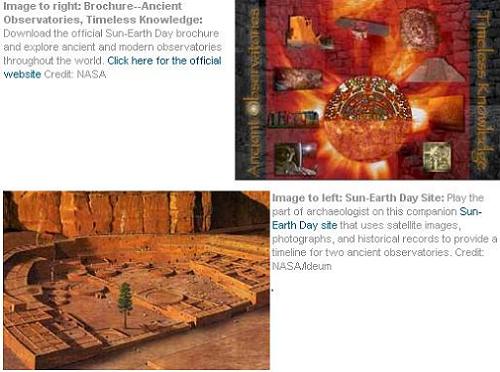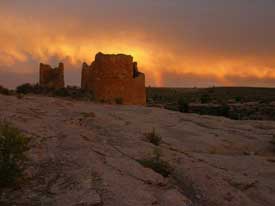What about Stonehenge, the Mayan pyramids and a spaceship that flies a million and a half kilometers away from us? They are all related to the human need to explore and understand the sun, moon, planets and stars
Avi Blizovsky

Direct link to this page: https://www.hayadan.org.il/.html

A recent film taken by the SOHO spacecraft (Solar and Heliospheric Observatory shared with NASA and the European Space Agency. Click here to get to the video
The Day of the Sun, starting on March 20, focused this time on the topic: "Ancient Civilizations: Eternal Knowledge". This time the vernal equinox also falls on this date, when night and day are equal in length. NASA and the San Francisco Exploratorium focus on ancient peoples and their fascination with the sun, which played a central role in most Native American religions, both in religious practice and social events.
NASA continues to study the Sun today through observations from the ground and from space, and it also seeks to understand the star that is closest to us and has the greatest impact on our lives. The sun plays a central role not only in the religious worship of extinct peoples in art, culture and more.
Bottom left: This spectacular sunset photo was taken during the summer solstice in Hovenweep. Hovenweep National Monument protected five historic Puebloan-era cow villages scattered within 30 miles of the structure in the Mesa peaks and canyons on the Utah-Colorado border. The "Shanesh room" is a rectangular room near the southern part of the tower and it may have been used during the equinoxes and between winter and summer. The rays of light shining through the portholes illuminate lines on the openings of the room.
For example, the Mayans built the pyramid at Colculcan in El Castillo, Mexico, between 1000 and 1200 AD when the movement of the sun was in their consciousness. The 25-meter square-based pyramid at Chichen Itza is unique among all the world's known pyramids for its central role in a dramatic display of light and shadow during the spring and autumn equinoxes. The axes from the northwest and northeast corners are directed towards the sun's sunrise point at the summer solstice and its sunset point at the winter solstice. Coglacan is the Mayan name for the feathered serpent god (also known as Quetzalcoatl to the Aztecs).
Top left: the poster of the event Ancient Culture - Eternal Knowledge.
In Cacho Canyon in the Cacho Historical Cultural Park in New Mexico, several buildings testify that the people of the ancient culture understood the movements of the sun. Pueblo Bonito's special window corners led the sunlight through the slits but only at times when you read from winter and summer. In Casa Rinocanda, a window in the south wall, it was possible for light rays to enter the alcove on the back wall during the summer solstice. Fajada Bute project (Fajada Bute) - there is a solar dagger during the equinoxes and the equinoxes. One light chip or sometimes two, form a frame for a spiral rock painting.
And at the other end of the world, among the ancient Egyptians, the sun god Ra was the king who was worshiped the most of all the gods and of all the ancestors of creation. He commanded a chariot that galloped across the sky during the day. The spectacular Karmak Temple celebrated with Rea through giant pillars, which were designed in harmony with the sun and stars over a period of about two thousand years.
We may never know for sure what those buildings that were inspired by the sun were used for. Many details are disputed about their exact content and the exact purpose of their creators. But we can at least admire their creators for what must have been a sophisticated understanding of the sun's movement. We can also admire them for their wisdom in applying knowledge to increase the survivability of these structures in a particularly unforgiving environment.
The purpose of Sun Day is to provide people with an understanding of the Sun as a magnetic star that affects the Earth and the other planets, and that humans of all cultures and all times have used and will use technology to understand the The sun and the universe beyond it.

Summer solstice sunset (2004) at Hovenweep National Monument (HNM).
